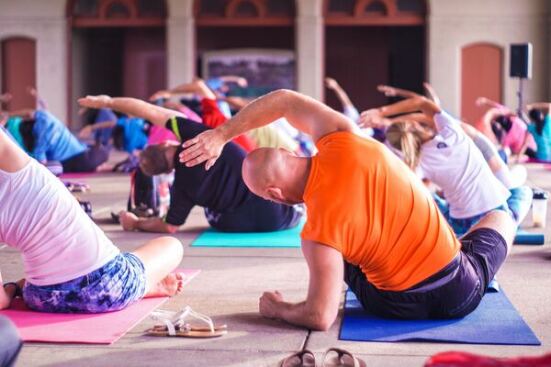7 Steps To Take If You Want To Become a Yoga Teacher
Becoming a yoga teacher is a fulfilling journey that allows you to share your passion for mindfulness, physical wellness, and spiritual growth with others. It's a path that not only deepens your personal practice but also empowers you to guide students on their own yoga journeys.
If you’re wondering, “Is NASM better than ISSA” while pursuing a career as a trainer, you may find yoga instruction to be a great complementary certification. No matter your path, here are seven steps to help you embark on your journey to becoming a certified yoga teacher.
1) Develop Your Personal Practice
Before you can effectively guide others, it's crucial to establish a strong personal yoga practice. Dedicate time each day to immerse yourself in various styles of yoga, from Hatha to Vinyasa, to deepen your understanding of poses, breathing techniques, and meditation.
Consistency is key; regular practice not only enhances your physical flexibility and strength but also deepens your spiritual connection. Exploring different styles will help you discover your preferences and areas of expertise, shaping the type of yoga teacher you aspire to be.
2) Choose a Yoga Teacher Training Program
Selecting the right yoga teacher training (YTT) program is pivotal to your development as a teacher. Look for accredited programs that align with your values, goals, and schedule. A comprehensive YTT curriculum typically covers yoga philosophy, anatomy, teaching methodology, and hands-on practice.
Many programs offer specialized tracks, such as prenatal yoga or therapeutic yoga, allowing you to tailor your training to your interests. Immersing yourself in a YTT program will not only deepen your understanding of yoga but also introduce you to a community of fellow practitioners who share your enthusiasm.
3) Immerse Yourself in Learning
A well-rounded yoga teacher embraces continuous learning. Beyond your YTT program, delve into books, workshops, and online courses that expand your knowledge. Familiarize yourself with different schools of yoga, study ancient yogic texts like the Yoga Sutras, and explore the science behind asanas and meditation.
Deepening your understanding of yoga's history, philosophy, and benefits equips you to answer students' questions thoughtfully and guide them toward holistic well-being.

4) Practice Teaching and Gain Experience
Practice teaching is essential to refining your skills as a yoga instructor. Begin by teaching friends, family members, or small groups to build your confidence and receive constructive feedback. Volunteer at local community centers, gyms, or wellness studios to gain hands-on experience.
Each class you teach offers an opportunity to fine-tune your sequencing, cueing, and adjustments. Constructive criticism from peers, mentors, and students helps you adapt and grow as a teacher, ultimately enhancing the quality of your classes.
5) Obtain Certification and Specialize
After completing your yoga teacher training and gaining practical experience, it's time to obtain your certification. Depending on the program, you'll receive a Yoga Alliance or other recognized certification upon successful completion. With certification in hand, you can choose to specialize in a specific area, such as restorative yoga, yoga for athletes, or mindfulness meditation.
Specializing enhances your expertise and attracts a specific audience seeking your unique skills. Additionally, pursuing workshops and advanced training programs can further hone your teaching abilities and allow you to bring innovation to your classes.
6) Cultivate Effective Communication
As a yoga teacher, your ability to communicate clearly and compassionately is paramount. Learn to use your voice, body language, and cues to guide students through their practice safely and mindfully. Understand that students come with varying levels of experience and physical abilities.
Tailor your instructions to suit different learning styles and be prepared to offer modifications or challenges as needed. Developing strong communication skills fosters a supportive and inclusive environment in your classes, encouraging students to feel comfortable exploring their practice and asking questions.
7) Build Your Online Presence
In today's digital age, having an online presence can significantly expand your reach as a yoga teacher. Create a professional website or blog to showcase your expertise, class schedules, and teaching philosophy. Next, use social media platforms like Instagram and YouTube to share yoga tutorials, tips, and insights.
Online classes and workshops allow you to connect with students worldwide, and platforms like Zoom make it easy to conduct virtual sessions. Building a strong online presence helps you connect with a wider audience and establish authority beyond the classroom.
A Guiding Light Through Practice
This journey is not only about becoming an instructor; it's about becoming a beacon of positivity, mindfulness, and transformation. With each class you teach, you have the power to influence lives, nurture well-being, and inspire meaningful change.
Embrace the path with an open heart and a dedicated spirit, and watch as you not only shape the lives of your students but also experience your own personal evolution as a yoga teacher.
Cover Credits: PeakPX.com


.png)


Leave a Reply